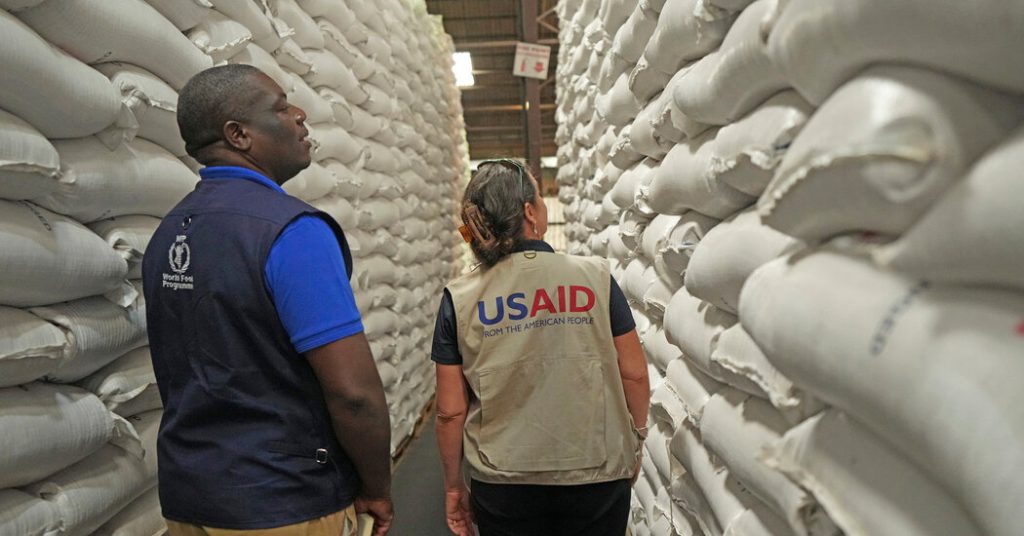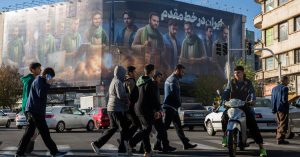The United States Agency for International Development, which faced the prospect of being folded into the State Department after it was put under the direction of Marco Rubio, the secretary of state, on Monday, has been the government’s lead agency for delivering humanitarian aid for generations.
Created as an independent entity in 1961, the agency delivers health services, disaster relief and anti-poverty efforts. But it has long been a target for conservative critics who say the agency spends wastefully and promotes progressive ideas that contradict American interests, and in the past two weeks President Trump and Elon Musk have taken steps to close it.
Here’s a look at the agency’s mission, budget and staffing.
What does U.S.A.I.D. do?
The scope of U.S.A.I.D.’s work is extensive: war relief in Ukraine, peace-building in Somalia, disease surveillance in Cambodia, vaccination efforts in Nigeria, H.I.V. prevention in Uganda and maternal health assistance in Zambia, among a wide range of other programs. The agency has helped to contain major outbreaks of Ebola and other hemorrhagic fevers in recent years.
In some regions, it supplies food, shelter and access to clean water that can be the difference between life and death. In others, it supports global networks of disease surveillance and biomedical research that help local populations and also protect Americans.
“We built out a network of 50-plus countries on every continent, developing what I’ve called the world’s immune system — an ever-accelerating capacity to prevent, detect and more rapidly respond to pandemic threats,” Dr. Atul Gawande, a senior U.S.A.I.D. official in the Biden administration, said last month in an address ahead of Mr. Trump’s inauguration. Mortality rates in countries aided by U.S.A.I.D. drop faster than in other places, Dr. Gawande added.
Global health experts say that U.S.A.I.D. has practiced a form of soft power around the world, allowing the United States to keep a friendly presence in developing nations, including countries that are key strategic allies.
What does the work cost?
While the agency’s foreign assistance programs are sweeping, their cost amounts to a tiny portion of the federal budget.
The U.S.A.I.D. has a budget of roughly $23 billion, part of a larger annual federal aid budget approved by Congress. The agency spent about $38.1 billion in fiscal year 2023, making up less than 1 percent of the federal budget. That makes it a relatively modest target for savings by Mr. Musk’s cost-cutting task force, the so-called Department of Government Efficiency.
Democratic lawmakers and former U.S.A.I.D. officials have said that moves to dismantle the agency or merge it with the State Department are illegal, since Congress created the agency as an independent body and continues to fund its operations.
Who does the work?
U.S.A.I.D. has an unusual structure for a Washington agency, since its permanent civil service employees and foreign service officers are far outnumbered by two kinds of contract workers.
The first are so-called personal service contractors, who have U.S. diplomatic passports when they work overseas, are authorized to speak on behalf of the government and may oversee budgets of millions of dollars in aid. These contractors are paid like full-time staff members but usually have no benefits or health insurance. The second group is made up of what are known as institutional contractors, hired in more temporary roles.
That structure may have made the agency a ripe target for Mr. Musk’s cost-cutters, as many of its workers do not have the kind of job protections enjoyed by other federal workers. Half of the agency’s work force has reportedly been eliminated in the last week. Hundreds of contractors have been fired or put on leave, and dozens of top U.S.A.I.D. officials have been put on paid leave.
Much of the work of implementing U.S.A.I.D.’s programs is done by nongovernmental organizations, which have had to fire staff members and close offices because the agency operated by disbursing grants in increments through a payment system that has now been disabled, and they were prohibited from having financial reserves.
They are not permitted to access the money — even if it was approved in their contracts — with the agency frozen.
Why are Musk and Republicans targeting the agency?
Conservative critics have long questioned the value of foreign aid programs.
Mr. Rubio on Monday faulted agency employees for “deciding that they’re somehow a global charity separate from the national interest or taxpayer dollars.”
The programs that U.S.A.I.D. supports have also come under attack by foreign governments, including Russia — a point of pride for staff members. “We know how meaningful this work is not only from its impact, but also from how it is being targeted by foreign propaganda campaigns,” Dr. Gawande said.
Closing it, Senator Amy Klobuchar, Democrat of Minnesota, said in a social media post over the weekend, “would make the world a more dangerous place for Americans and be a gift to China and Russia.”
The extent of the U.S. aid freeze is still unclear. Mr. Rubio said in a cable to U.S. missions abroad that Mr. Trump’s halt on foreign assistance would last at least through a three-month assessment period. But U.S. officials have already told some aid groups that programs promoting diversity, women’s reproductive rights and climate resilience will be cut.








